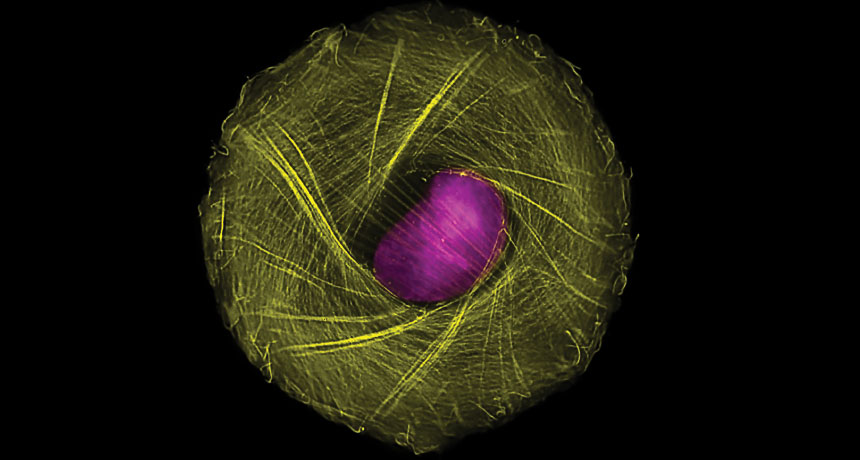Twisty chains of proteins keep cells oriented
Curved fibers enable cells to tell right from left

CURVED SPOKES Actin filaments (yellow; cell nucleus in magenta) tilt counterclockwise as they extend inward, helping a cell distinguish right from left.
Y.H. Tee et al. Nature Cell Biology 2015